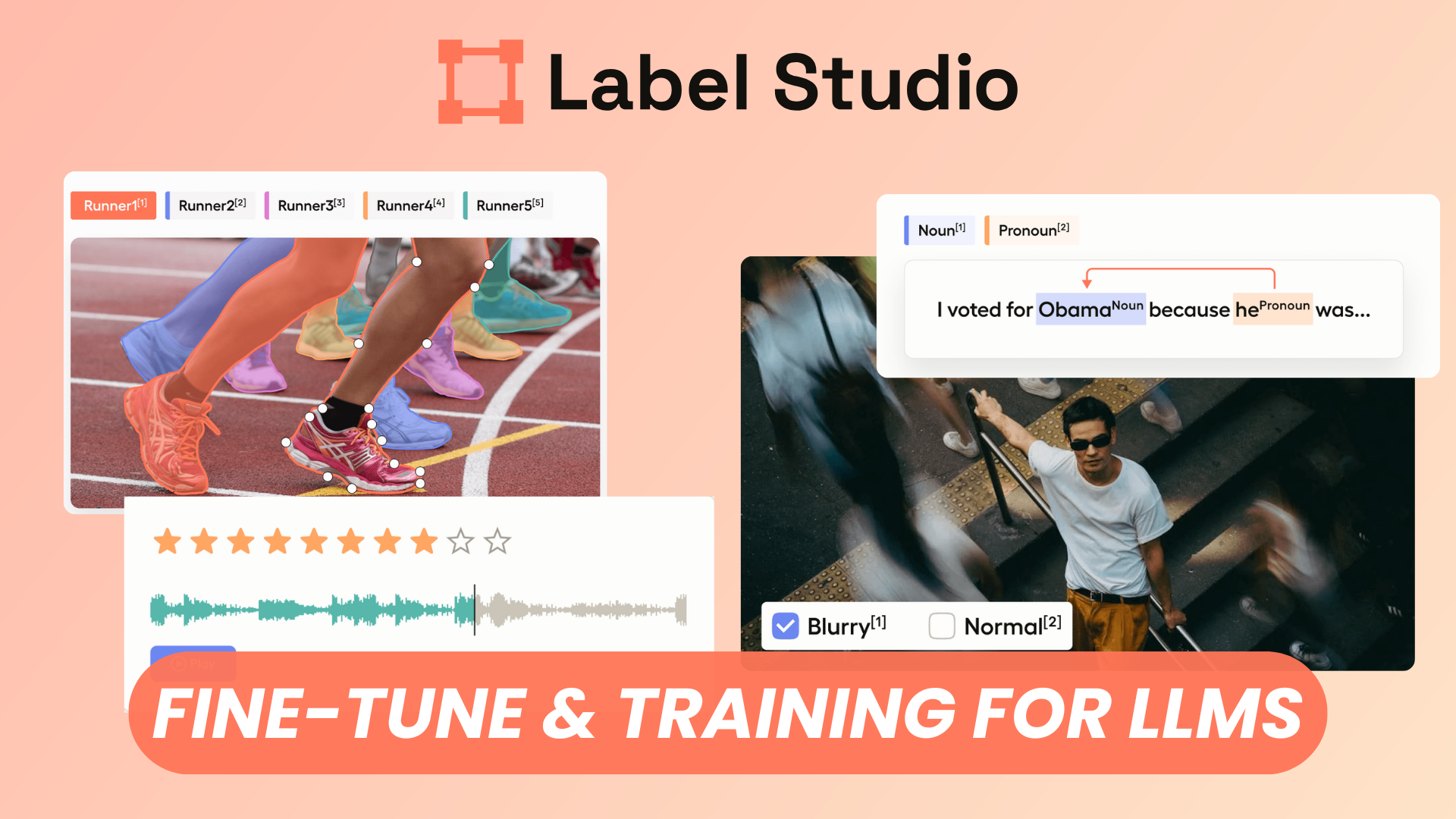Label Studio: Free Open Source Data Labeling Platform for AI Models

Label Studio has become one of the most flexible and widely adopted open-source data labeling platforms available today. Designed to support multimodal AI workflows, it gives teams a powerful way to annotate images, text, audio, video, time series, documents, and custom data types within a single unified interface. Its strength lies in its modularity: you can tailor the labeling UI, connect it to cloud storage, integrate ML models for pre-annotations, and collaborate with teams of any size.
Whether you’re building computer vision systems, LLM pipelines, speech-to-text models, or multimodal AI, Label Studio provides the infrastructure to organize your data, accelerate labeling, and maintain quality across large-scale projects.
Watch our platform overview
Dashboard & Projects
When you first log into Label Studio, you're greeted with a clean dashboard summarizing your projects, their progress, and their labeling status. Projects are the backbone of the platform—each represents a dataset, its labeling configuration, its tasks, and its collaborators.
Within each project, you can:
- Define your labeling interface
- Import data from multiple sources
- Assign tasks to labelers
- Review completed annotations
- Track progress and data health
This structured approach keeps even large datasets manageable and ensures consistent workflows across teams.
Image Labeling
Label Studio excels in computer vision workflows. The image labeling interface lets you configure bounding boxes, polygons, keypoints, brushes, classifications, and segmentation masks. You can mix multiple labeling tools in a single project—ideal when working with complex images requiring layered annotations.
Because the UI is fully customizable, you’re not locked into preset templates. Need bounding boxes plus image-level attributes? Want polygon outlines combined with keypoint landmarks? Label Studio makes it trivial.
NLP
Text labeling is another area where Label Studio shines. It supports popular NLP tasks such as:
- Named entity recognition (NER)
- Text classification
- Summarization
- Question answering
- Sentiment analysis
- Relation extraction
The interface supports multi-select labels, token-level marking, span detection, and hierarchical taxonomies. Its flexibility makes it suitable for everything from constructing training corpora for LLMs to fine-tuning domain-specific chatbots.
Audio, Graphs, Video Labeling
Beyond images and text, Label Studio includes annotation support for:
- Audio (transcriptions, timestamps, speaker diarization, event detection)
- Graphs / Time Series (anomaly tagging, segmentation, pattern marking)
- Video (frame-by-frame annotations, object tracking, region classification)
This multimodal capability is especially useful for teams working on speech recognition, sensor analytics, autonomous systems, or surveillance datasets—all while maintaining a consistent workflow across media types.
Image Captioning
Label Studio also supports generating free-text descriptions for images, making it a great choice for training image-to-text models or evaluating generative vision systems. You can configure UI elements to combine visual inputs with text fields, label suggestions, or structured metadata.
Tasks
In Label Studio, each data item becomes a task. Tasks can be:
- Assigned to multiple annotators for consensus voting
- Filtered by state (new, in progress, completed)
- Grouped and distributed in batches
- Augmented with pre-existing metadata
Tasks form the operational core of the labeling workflow and determine how efficiently users can progress through large datasets.
Regions, Relations, & History
Regions represent the labeled elements in an image, text span, or audio segment. Label Studio allows:
- Creating relationships between regions (e.g., object A refers to object B)
- Adding hierarchical or linked annotations
- Reviewing region history, edits, merges, and deletions
This is especially powerful for complex tasks such as entity-relation extraction, multi-label vision tasks, or multimodal linking.
Labeling Session & Shortcuts
To help labelers work quickly and accurately, Label Studio includes an optimized labeling session interface with:
- Custom keyboard shortcuts
- Quick-label panels
- Confidence scoring
- Undo/redo controls
- Fast navigation between tasks
Shortcuts and workflow enhancements can drastically reduce annotation time, especially when dealing with thousands of images or long text passages.
Exporting, Model Integration & Predictions
Once labeling is complete, Label Studio supports a wide range of export formats commonly used by ML frameworks. You can export:
- JSON, COCO, Pascal VOC, YOLO-style annotations
- NLP-friendly span formats
- Audio/video region data
- Custom templates
Label Studio can also integrate with machine learning models to:
- Generate pre-annotations
- Run active-learning loops
- Provide predictions inside the labeling interface for human correction
This “human-in-the-loop” workflow significantly accelerates dataset creation and improves data quality.
Cloud Storage, Webhooks, Team Members, & API
Label Studio works seamlessly with external infrastructure. You can:
- Connect cloud storage providers (S3, GCS, Azure Blob, MinIO, etc.)
- Automate workflows using webhooks
- Manage team roles (admin, reviewer, annotator)
- Use the REST API for scaling and automation
- Deploy it self-hosted or use managed SaaS offerings
This makes it suitable for small research teams, enterprise deployments, and large-scale annotation pipelines.
Conclusion
Label Studio stands out as a versatile, open-source, and highly extensible platform designed for modern AI workflows. Whether you’re labeling images, text, audio, or video—or combining multiple modalities into a single project—it provides the tools needed to accelerate annotation, maintain quality, and integrate seamlessly with machine learning training pipelines.
For anyone building production-level AI systems, Label Studio is one of the most important tools to include in your data pipeline.
